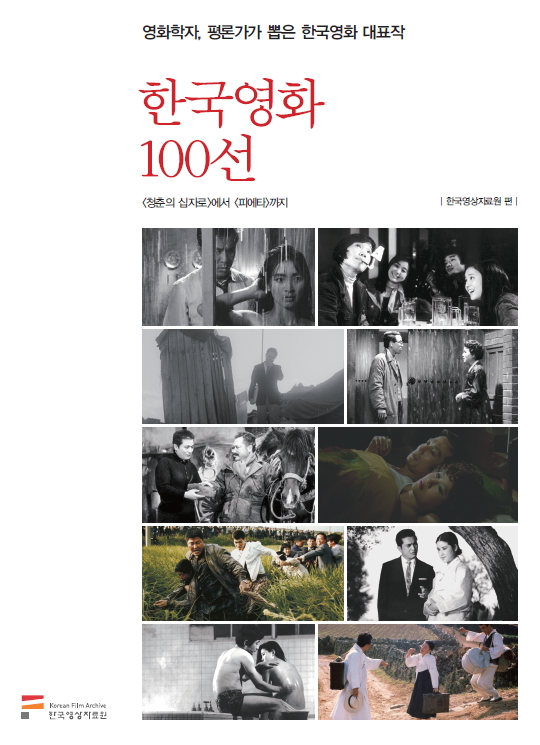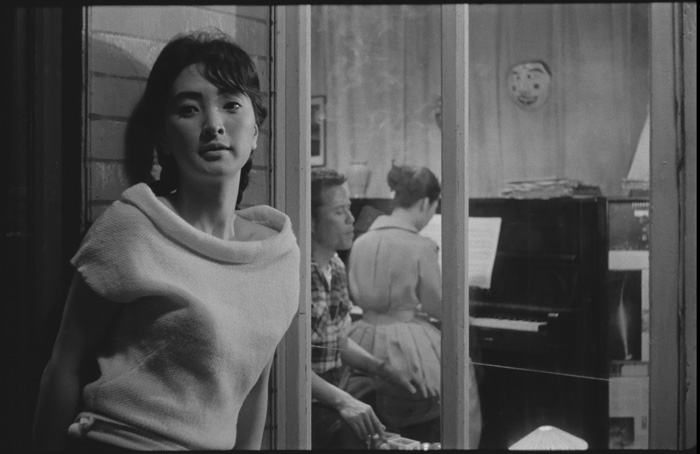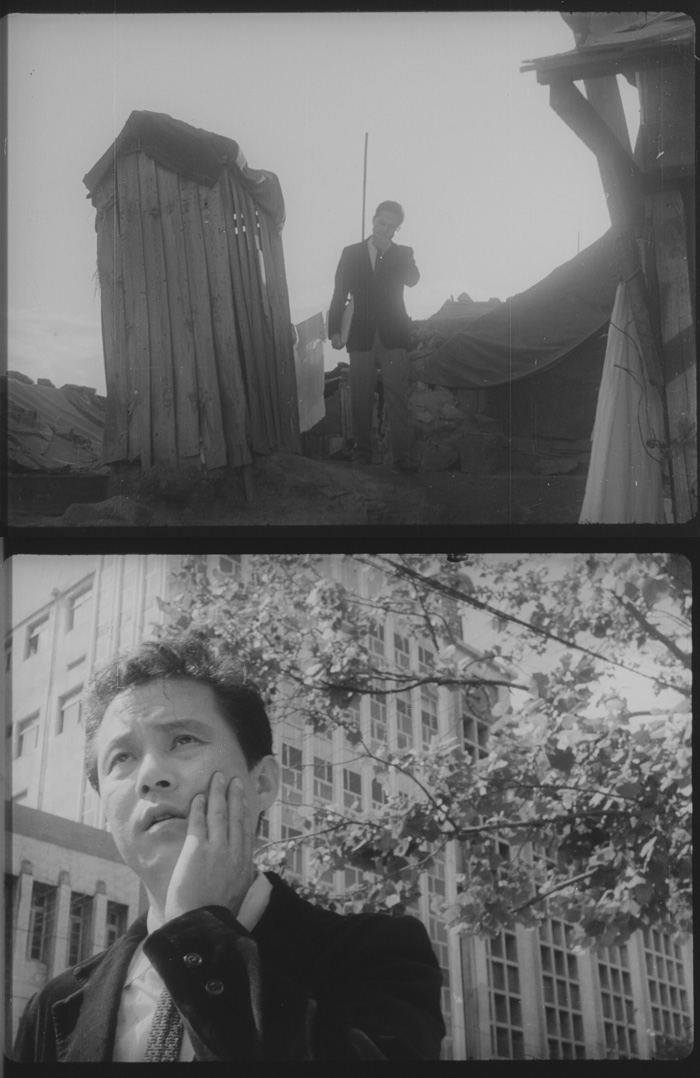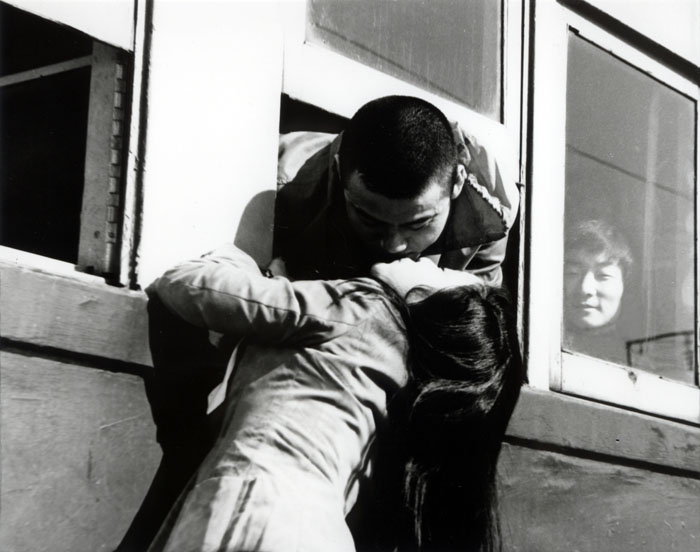The concept of film is presumed to have been first introduced to Korea in 1901. It was American photographer and traveler Burton Holmes (1870-1958) who first brought a movie to Korea and introduced King Gojong (r. 1863-1907) to the pleasures of film for the first time. After that, it took 20 more years until a Korean director made a movie.
The Korean film industry has now been around for more than a century, and it has been a very colorful ride. In 2012, the number of moviegoers in Korea surpassed the 100 million mark for the first time. Just one year later, the domestic market sold 200 million tickets. The 200 million mark suggests that an average person watched about four films in the theater last year.
Over the past 100 years, Korean society has experienced occupation, independence, war, economic ups and downs and much more. We can find both the joys and sorrows of life, all melted down into Korean cinema.
In celebration of the 100th anniversary of Korean film and in an attempt to look back upon its history, the Korean Film Archive (KFA) has selected its top 100 films. A total of 62 film experts took part in the survey and their answers spanned all genres, including fiction, documentaries and animation. The movies could have been made any time from the earliest stages up to the last day of 2012. All were subject to investigation and assessment.

The main criteria for the 100 selected films were public consciousness of the film when it came out and its influence on society in terms of its motifs and themes. In chronological order, films produced in the 1960s took up a major part of the list. According to the KFA, it was during the 1960s that there was a sharp drop in governmental control, which encouraged and stimulated directors to come up with new cinematic ideas.
As the No. 1 film that represents Korean history, three productions share the honor. The three tie-winners are “The Housemaid” made in 1960, “An Aimless Bullet” from 1961 and “The March of Fools” in 1975. In each of the three movies, the director intended to deliver a certain message and they were all critically acclaimed by film experts upon their release.

“The Housemaid” (1960) Directed by Kim Ki-yeong.
In the first movie, “The Housemaid,” the protagonist, Dong-sik, gives his co-workers music lessons at his workplace, a textile factory. He appears in the opening scene reading a newspaper article about a murder. A female coworker, Gyeong-hee, begins to visit his house to receive piano lessons. Dong-sik’s wife, it turns out, has exhausted herself preparing their new home and has gotten sick. This becomes an opportunity for Dong-sik to hire a housemaid. He asks Gyeong-hee for a recommendation. When his wife is recuperating at her mother’s, Gyeong-hee confesses her love for Dong-sik, but is turned down and kicked out of his house. Secretly keeping an eye on the scene through a window, the housemaid then enters the room and lures Dong-sik to bed. The housemaid ends up pregnant. Upon hearing the news, his wife pushes the housemaid down the stairs, leading to a miscarriage. The housemaid threatens them, saying that she will disclose everything to the factory. In an effort to protect the house and family name, the wife sends her husband to the housemaid’s room. Dong-sik and the maid take poison to kill themselves and in the final scene, Dong-sik returns to his wife and breathes his last in her arms. The film returns to its original scene, where Dong-sik and his wife are reading a newspaper together.
Critics said that the framed narrative utilized in "The Housemaid” was successful in transgressing the boundary between film and reality. It was regarded as a very unique film with a fresh style. Its core messages—men obsessed with paternalism and modernization, social classes and social power, dominance and violence, desire and oppression—all leap to the screen. Critic Jeong Ji-yeon has said that, “In the eyes of director Kim Ki-yeong, women are subjects who have primitive desires and are dominant over men, and that this mirrors the desires and oppression of the men.”

“An Aimless Bullet” (1961) Directed by Yoo Hyun-mok.
In the second movie, 1961’s “An Aimless Bullet,” the main character, Cheol-ho, works as a clerk at a chartered accountancy. He is the main breadwinner for his family of seven: his mother, shell-shocked from the war, his malnourished pregnant wife, a little girl and three destitute younger siblings. He is so poor he can’t even go to the dentist to have a toothache fixed. Despite this desperate existence, Cheol-ho never feels frustrated.
In the midst of all this, Cheol-ho’s friend, Yeong-ho, in similar life circumstances, commits an act of burglary in an attempt to escape reality, but in the end it fails. Cheol-ho has to visit the police station to see his friend. On his way home, with mixed feelings, he hears that his wife is about to give birth to a baby. He immediately heads toward the hospital. Upon arrival, he hears the news of her death. The shock knocks him a serious blow and he faints. In the final scene, without seeing his wife’s body, Cheol-ho wanders out of the hospital, around the streets of Seoul and goes to find a dentist’s office.
“An Aimless Bullet” vividly pictures the grief, sorrow and poverty that represented 1960s Korea, when the nation was striving to lift itself up in the aftermath of the Korean War. Film expert Kim Jong-won has called the film a “byword for realism.” Kim explained that director Yoo’s detailed showing of the spirit of the times and his strongly emphasized themes raised public awareness and that the movie is worthy of high praise. “An Aimless Bullet” has been securing its top place in various surveys over the past few decades.

“The March of Fools” (1975) Directed by Ha Gil-jong.
The final film revolves around four characters, all in their 20s. Byeong-tae and Yeong-cheol, both majoring in philosophy, make friends with two female students, Yeong-ja and Sun-ja, majoring in French Literature at a nearby university. The four of them often hang out, sharing their troubles and drinking together. Byeong-tae always half-jokingly asks Yeong-ja to marry him, but then she always turns him down pointing out his unclear future as a graduate with a degree in philosophy. Nonetheless, the two keep going on dates, more and more frequently. One day, however, Yeong-ja leaves him saying that she has to marry a guy to whom her parents introduced her.
Meanwhile, Yeong-cheol falls in love with Sun-ja but she can’t accept his proposal either. The reasons are that he stammers when speaking, he has a dim future and he failed a medical checkup and is thus unable to serve his mandatory military service.
The two guys meet up and head out toward the beach. Yeong-cheol rides his bicycle to the top of a cliff and throws himself over it, into the open sea. Standing there stuck for a long time, trapped in a desperate inner struggle, Byeong-tae finally leaves to serve his military service. Yeong-ja comes to the rail station to see him off. In the final scene, the two characters kiss.
“The March of the Fools” shines a spotlight on the culture of youth that was in full bloom during the mid-1970s. The director melts down various cultural elements and includes them in his film, including jeans, a popular folk song “Whale-hunting,” group blind dates and a culture of drinking makgeolli, a rice beer, that all represent ’70s youth. This film shows the gaps between the ideal and reality, and the psychological struggle that youth had to endure during their school years. Critic Lee Sang-yong has added that the newly-invented zoom lens was in active use throughout filming, allowing for a unique technique and a fresh style.
These three films, and the 97 other films chosen by the KFA, are being screened all year long at the Cinematheque KOFA in Sangam-dong, Seoul. Admission is free. Only some of the movies have English subtitles.
More information can be found at the website of KFA: www.koreafilm.org
All 100 of the KFA’s films can be found here: http://www.koreafilm.org/feature/100.asp
The Korean Film Archive also maintains a YouTube channel:
https://www.youtube.com/user/KoreanFilm
By Lee Seung-ah
Korea.net Staff Writer
slee27@korea.kr
The Korean film industry has now been around for more than a century, and it has been a very colorful ride. In 2012, the number of moviegoers in Korea surpassed the 100 million mark for the first time. Just one year later, the domestic market sold 200 million tickets. The 200 million mark suggests that an average person watched about four films in the theater last year.
Over the past 100 years, Korean society has experienced occupation, independence, war, economic ups and downs and much more. We can find both the joys and sorrows of life, all melted down into Korean cinema.
In celebration of the 100th anniversary of Korean film and in an attempt to look back upon its history, the Korean Film Archive (KFA) has selected its top 100 films. A total of 62 film experts took part in the survey and their answers spanned all genres, including fiction, documentaries and animation. The movies could have been made any time from the earliest stages up to the last day of 2012. All were subject to investigation and assessment.

The main criteria for the 100 selected films were public consciousness of the film when it came out and its influence on society in terms of its motifs and themes. In chronological order, films produced in the 1960s took up a major part of the list. According to the KFA, it was during the 1960s that there was a sharp drop in governmental control, which encouraged and stimulated directors to come up with new cinematic ideas.
As the No. 1 film that represents Korean history, three productions share the honor. The three tie-winners are “The Housemaid” made in 1960, “An Aimless Bullet” from 1961 and “The March of Fools” in 1975. In each of the three movies, the director intended to deliver a certain message and they were all critically acclaimed by film experts upon their release.

“The Housemaid” (1960) Directed by Kim Ki-yeong.
In the first movie, “The Housemaid,” the protagonist, Dong-sik, gives his co-workers music lessons at his workplace, a textile factory. He appears in the opening scene reading a newspaper article about a murder. A female coworker, Gyeong-hee, begins to visit his house to receive piano lessons. Dong-sik’s wife, it turns out, has exhausted herself preparing their new home and has gotten sick. This becomes an opportunity for Dong-sik to hire a housemaid. He asks Gyeong-hee for a recommendation. When his wife is recuperating at her mother’s, Gyeong-hee confesses her love for Dong-sik, but is turned down and kicked out of his house. Secretly keeping an eye on the scene through a window, the housemaid then enters the room and lures Dong-sik to bed. The housemaid ends up pregnant. Upon hearing the news, his wife pushes the housemaid down the stairs, leading to a miscarriage. The housemaid threatens them, saying that she will disclose everything to the factory. In an effort to protect the house and family name, the wife sends her husband to the housemaid’s room. Dong-sik and the maid take poison to kill themselves and in the final scene, Dong-sik returns to his wife and breathes his last in her arms. The film returns to its original scene, where Dong-sik and his wife are reading a newspaper together.
Critics said that the framed narrative utilized in "The Housemaid” was successful in transgressing the boundary between film and reality. It was regarded as a very unique film with a fresh style. Its core messages—men obsessed with paternalism and modernization, social classes and social power, dominance and violence, desire and oppression—all leap to the screen. Critic Jeong Ji-yeon has said that, “In the eyes of director Kim Ki-yeong, women are subjects who have primitive desires and are dominant over men, and that this mirrors the desires and oppression of the men.”

“An Aimless Bullet” (1961) Directed by Yoo Hyun-mok.
In the second movie, 1961’s “An Aimless Bullet,” the main character, Cheol-ho, works as a clerk at a chartered accountancy. He is the main breadwinner for his family of seven: his mother, shell-shocked from the war, his malnourished pregnant wife, a little girl and three destitute younger siblings. He is so poor he can’t even go to the dentist to have a toothache fixed. Despite this desperate existence, Cheol-ho never feels frustrated.
In the midst of all this, Cheol-ho’s friend, Yeong-ho, in similar life circumstances, commits an act of burglary in an attempt to escape reality, but in the end it fails. Cheol-ho has to visit the police station to see his friend. On his way home, with mixed feelings, he hears that his wife is about to give birth to a baby. He immediately heads toward the hospital. Upon arrival, he hears the news of her death. The shock knocks him a serious blow and he faints. In the final scene, without seeing his wife’s body, Cheol-ho wanders out of the hospital, around the streets of Seoul and goes to find a dentist’s office.
“An Aimless Bullet” vividly pictures the grief, sorrow and poverty that represented 1960s Korea, when the nation was striving to lift itself up in the aftermath of the Korean War. Film expert Kim Jong-won has called the film a “byword for realism.” Kim explained that director Yoo’s detailed showing of the spirit of the times and his strongly emphasized themes raised public awareness and that the movie is worthy of high praise. “An Aimless Bullet” has been securing its top place in various surveys over the past few decades.

“The March of Fools” (1975) Directed by Ha Gil-jong.
The final film revolves around four characters, all in their 20s. Byeong-tae and Yeong-cheol, both majoring in philosophy, make friends with two female students, Yeong-ja and Sun-ja, majoring in French Literature at a nearby university. The four of them often hang out, sharing their troubles and drinking together. Byeong-tae always half-jokingly asks Yeong-ja to marry him, but then she always turns him down pointing out his unclear future as a graduate with a degree in philosophy. Nonetheless, the two keep going on dates, more and more frequently. One day, however, Yeong-ja leaves him saying that she has to marry a guy to whom her parents introduced her.
Meanwhile, Yeong-cheol falls in love with Sun-ja but she can’t accept his proposal either. The reasons are that he stammers when speaking, he has a dim future and he failed a medical checkup and is thus unable to serve his mandatory military service.
The two guys meet up and head out toward the beach. Yeong-cheol rides his bicycle to the top of a cliff and throws himself over it, into the open sea. Standing there stuck for a long time, trapped in a desperate inner struggle, Byeong-tae finally leaves to serve his military service. Yeong-ja comes to the rail station to see him off. In the final scene, the two characters kiss.
“The March of the Fools” shines a spotlight on the culture of youth that was in full bloom during the mid-1970s. The director melts down various cultural elements and includes them in his film, including jeans, a popular folk song “Whale-hunting,” group blind dates and a culture of drinking makgeolli, a rice beer, that all represent ’70s youth. This film shows the gaps between the ideal and reality, and the psychological struggle that youth had to endure during their school years. Critic Lee Sang-yong has added that the newly-invented zoom lens was in active use throughout filming, allowing for a unique technique and a fresh style.
These three films, and the 97 other films chosen by the KFA, are being screened all year long at the Cinematheque KOFA in Sangam-dong, Seoul. Admission is free. Only some of the movies have English subtitles.
More information can be found at the website of KFA: www.koreafilm.org
All 100 of the KFA’s films can be found here: http://www.koreafilm.org/feature/100.asp
The Korean Film Archive also maintains a YouTube channel:
https://www.youtube.com/user/KoreanFilm
By Lee Seung-ah
Korea.net Staff Writer
slee27@korea.kr
